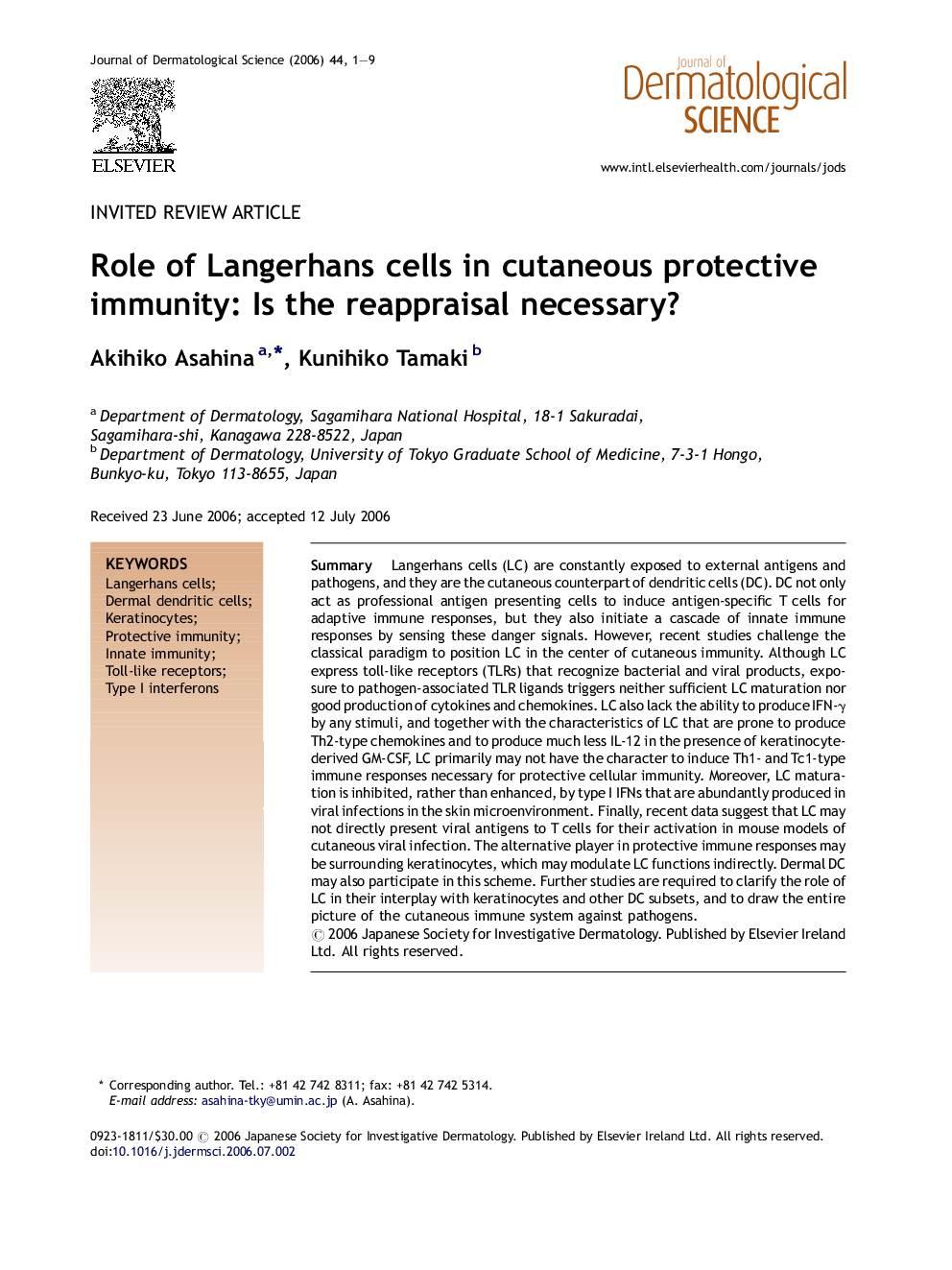| Article ID | Journal | Published Year | Pages | File Type |
|---|---|---|---|---|
| 3214470 | Journal of Dermatological Science | 2006 | 9 Pages |
SummaryLangerhans cells (LC) are constantly exposed to external antigens and pathogens, and they are the cutaneous counterpart of dendritic cells (DC). DC not only act as professional antigen presenting cells to induce antigen-specific T cells for adaptive immune responses, but they also initiate a cascade of innate immune responses by sensing these danger signals. However, recent studies challenge the classical paradigm to position LC in the center of cutaneous immunity. Although LC express toll-like receptors (TLRs) that recognize bacterial and viral products, exposure to pathogen-associated TLR ligands triggers neither sufficient LC maturation nor good production of cytokines and chemokines. LC also lack the ability to produce IFN-γ by any stimuli, and together with the characteristics of LC that are prone to produce Th2-type chemokines and to produce much less IL-12 in the presence of keratinocyte-derived GM-CSF, LC primarily may not have the character to induce Th1- and Tc1-type immune responses necessary for protective cellular immunity. Moreover, LC maturation is inhibited, rather than enhanced, by type I IFNs that are abundantly produced in viral infections in the skin microenvironment. Finally, recent data suggest that LC may not directly present viral antigens to T cells for their activation in mouse models of cutaneous viral infection. The alternative player in protective immune responses may be surrounding keratinocytes, which may modulate LC functions indirectly. Dermal DC may also participate in this scheme. Further studies are required to clarify the role of LC in their interplay with keratinocytes and other DC subsets, and to draw the entire picture of the cutaneous immune system against pathogens.
